Arielle Kitio is a Cameroonian doctoral student in software engineering who founded CAYSTI (an acronym for Cameroon Youth School Tech Incubator) in 2017. CAYSTI is a training centre that aims to facilitate equal access to quality education by introducing children to technology, particularly computer programming. CAYSTI recently created the I3DE project – 3D printing for education – as part of the PRICNAC initiative, led by the Agence Universitaire de la Francophonie (in Cameroon and seven other Central African countries) and supported by the ACP Innovation Fund, with funding from the European Union. The project aims to improve learners’ practical and creative skills through 3D printing. Arielle Kitio talks to us about digital technology, which she intends to make accessible and useful to as many people as possible.
As part of CAYSTI ABC Code, you have developed coding software for children aged 6 to 15. Could you please tell us about the main strengths of this software?
ABC Code aims to boost creativity by making learning to code as easy as the French alphabet ABC. We started with a simple observation: to learn to code, a 6-year-old child must have a basic knowledge of English, which is deeply unfair. ABC code introduces children to coding in a fun way, in the language in which they express themselves best, be it French, Wolof or Fulfulde for example. The other strong point is learning by doing. The child can write code, halfway between spoken language and programming language, and therefore concentrate on the logic to solve his problem and at the same time better handle the language in which he expresses himself, with, in case of error, a dictionary that helps him to correct himself.
How many young people have you introduced to this coding so far?
9000, mainly in Cameroon, Gabon and the DRC.
Could you tell us about some of the most interesting applications you have helped to create as part of this programme?
We have a truly learner-centred learning process which allows the learner to first detect the issue that speaks to him or her. There are children who like cakes, and others like technology, or fashion. I could mention young girls in Yaoundé who found it abnormal that men stop everywhere to relieve themselves, and who created a mobile application to give the public toilet locations around them. Others whose houses had burned down created a tutorial on first aid in case of fire. Children have created calculators to share with their peers the concepts they have learned, sines, cosines, etc.
What are the main reasons why you think there should be more women in the digital professions?
For three main reasons. Firstly, the opportunities. For example, e-commerce means access to a market of 1.2 billion people. Secondly, inclusion: in artificial intelligence, the data sets must be very diverse and include differences in gender, race, social level, religion, and schools of thought to reduce bias. Third reason: women are better placed to solve women’s problems. Here I take the case of young women who have been trained and who have created a prediction model for pre-eclampsia, one of the main causes of death in childbirth, using artificial intelligence. In Cameroon, where there is one doctor for about 2,000 people, and where it takes about 34 parameters to diagnose whether a woman is at risk of developing it, this prediction model is very useful.
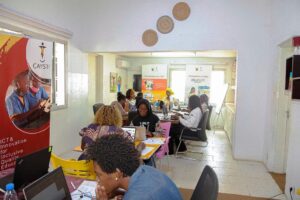
(Final exams of the first cohort of the TechWomen Factory by Caysti programme)
Your leitmotiv is to say that IT must be demystified and made much more accessible to the general public. What are you doing to achieve this?
We work in a systemic way. We have a ‘TechWomen Factory’ programme that trains unemployed, underemployed or retrained women in digital professions. We trained 179 of them in 2022. We have activities such as I3DE, which provides the education system with equipment, human resources and capacity building to improve learning and training. We are also technical partners of the Cameroon Ministry of Education and UN organisations, to facilitate access to vulnerable populations (girls and refugees, among others).
In your opinion, what is preventing women in your country and even more widely in Africa from gaining a foothold in the digital sector?
There are the stereotypes that digital is complicated, that it is for men. There is the way women look at themselves, thinking that they don’t have the skills. There are disparities in access to resources, the Internet, and also skills. In Cameroon and in sub-Saharan Africa in general, when parents do not have many resources, they choose to send the boy to school first. And then, we can see very clearly who the muses of the brands and big companies are. They are never women scientists or techies. So young people cannot aspire to become what they do not see and do not know.
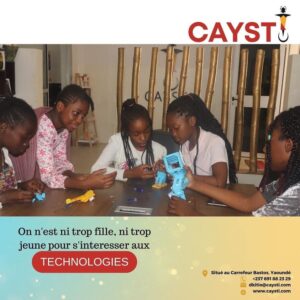
Apart from the role models who need to be made more visible, what other levers can be used to change the situation?
We need a political will because I take the case of my organisation, 9000 is good, but it is still too few. Education is a matter of right. We need incentives to help organisations working in this sector, equipment, infrastructure, and better Internet coverage. In sub-Saharan Africa, less than 30% of people are connected to the Internet. And then there is a lot of awareness-raising work because parents can be one of the main obstacles.
CAYSTI recently launched 3D printing for education project (I3DE). How do you intend to concretely improve teaching and technical learning thanks to 3D printing? And what concrete results can we expect on the ground?
Imagine a person who obtains a mechanical bachelor’s degree without ever having handled a crank or a motor. They are not ready for the job market because they don’t have practical skills. But the problem is that the high school she attended does not have the means to equip itself. So 3D printing is positioned as an affordable technology that can make learning much more practical. For example, when a teacher gives a lesson on the crank, instead of showing it in a book, he models it and brings it to the classroom so that the students can manipulate it. I3DE is working on 4 pillars: equipping schools with the equipment, capacity building (teachers need to be trained to use the equipment and didactic kits need to be created), recycling of used plastic (3D printing works a lot with plastic filaments) and finally advocacy to replicate this model in other schools.
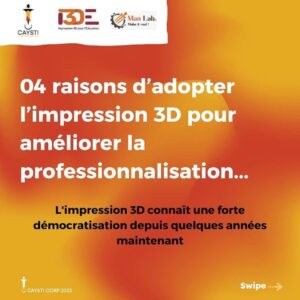
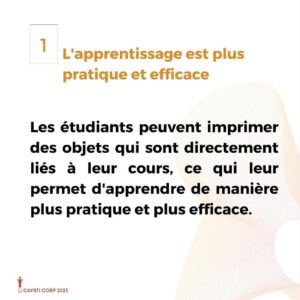
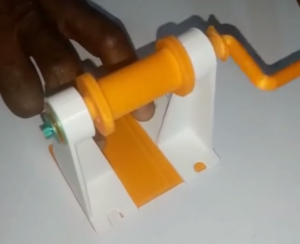
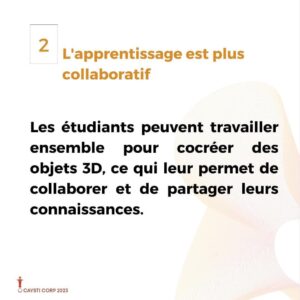
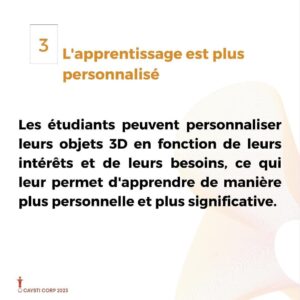
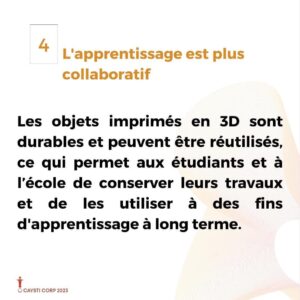
You have received many awards or distinctions in recent years (see box below). What role have all these awards played in your life, apart from giving you more immediate visibility?
These international recognitions have shown some people who were sceptical that the issue we are addressing is real and that digital creativity is important
And how do you see yourself in 2030? What are your ambitions?
I would like I3DE to be replicated in other countries. I’m thinking of French-speaking sub-Saharan Africa first and foremost, but also the Caribbean, which showed great interest in possible synergies with our projects at the last OEACP R&I meeting. I would like the products and equipment we are working on to become accessible to as many people as possible. Because the three keywords we work on are education, inclusion and innovation. And inclusion is really a key link in our approach.
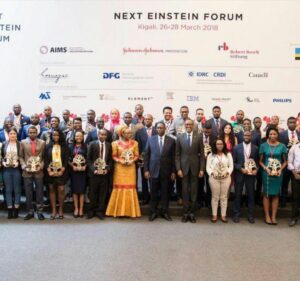 |
Arielle Kitio received many awards and distinctions: winner of the Tech Women Award in 2016, the Orange Prize for Social Entrepreneurship in 2017, Ambassador of the Next Einstein Forum in Cameroon between 2017 and 2019, ranked in the magazine Forbes Under 30 Africa, and winner of the Margaret Prize for Digital Women’s Day 2019. |
And how do you see yourself in 2030? What are your ambitions?
I would like I3DE to be replicated in other countries. I’m thinking of French-speaking sub-Saharan Africa first and foremost, but also the Caribbean, which showed great interest in possible synergies with our projects at the last OEACP R&I meeting. I would like the products and equipment we are working on to become accessible to as many people as possible. Because the three keywords we work on are education, inclusion and innovation. And inclusion is really a key link in our approach.
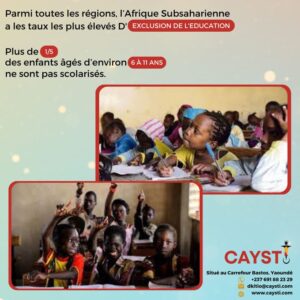
Podcast link (in French only): https://bit.ly/3L4iRX7
